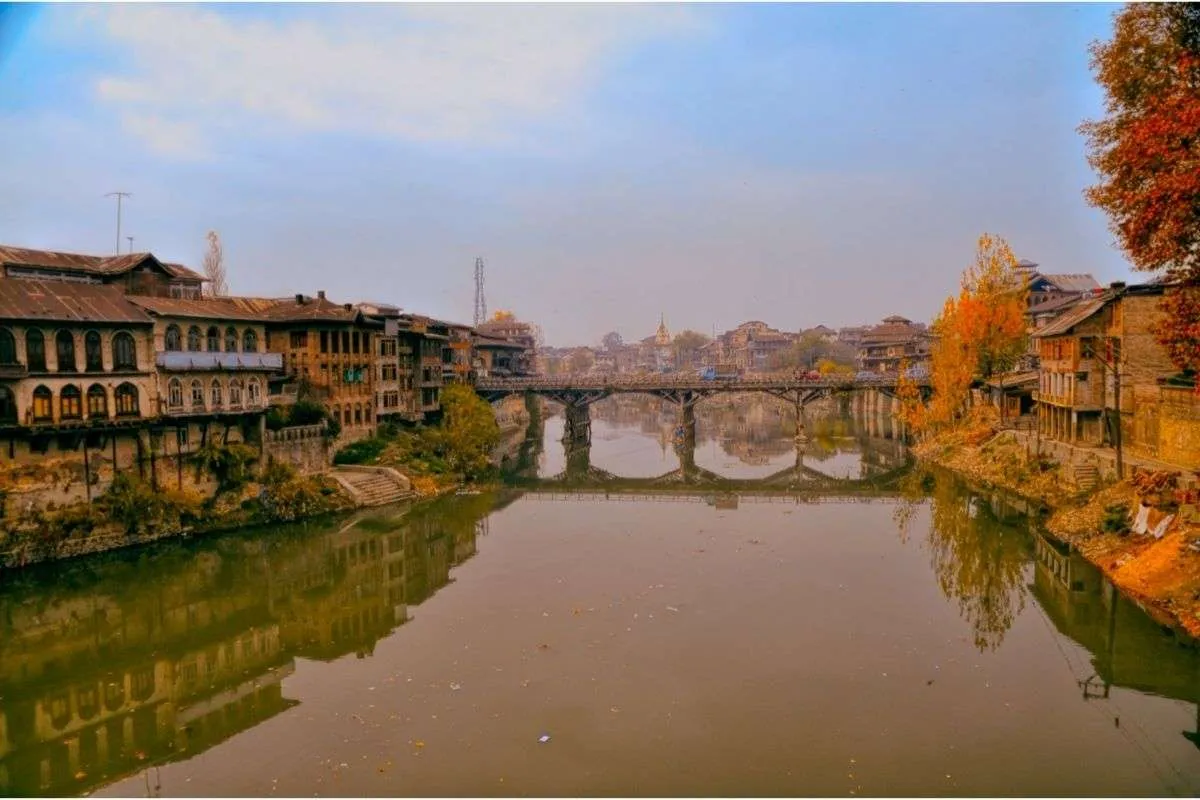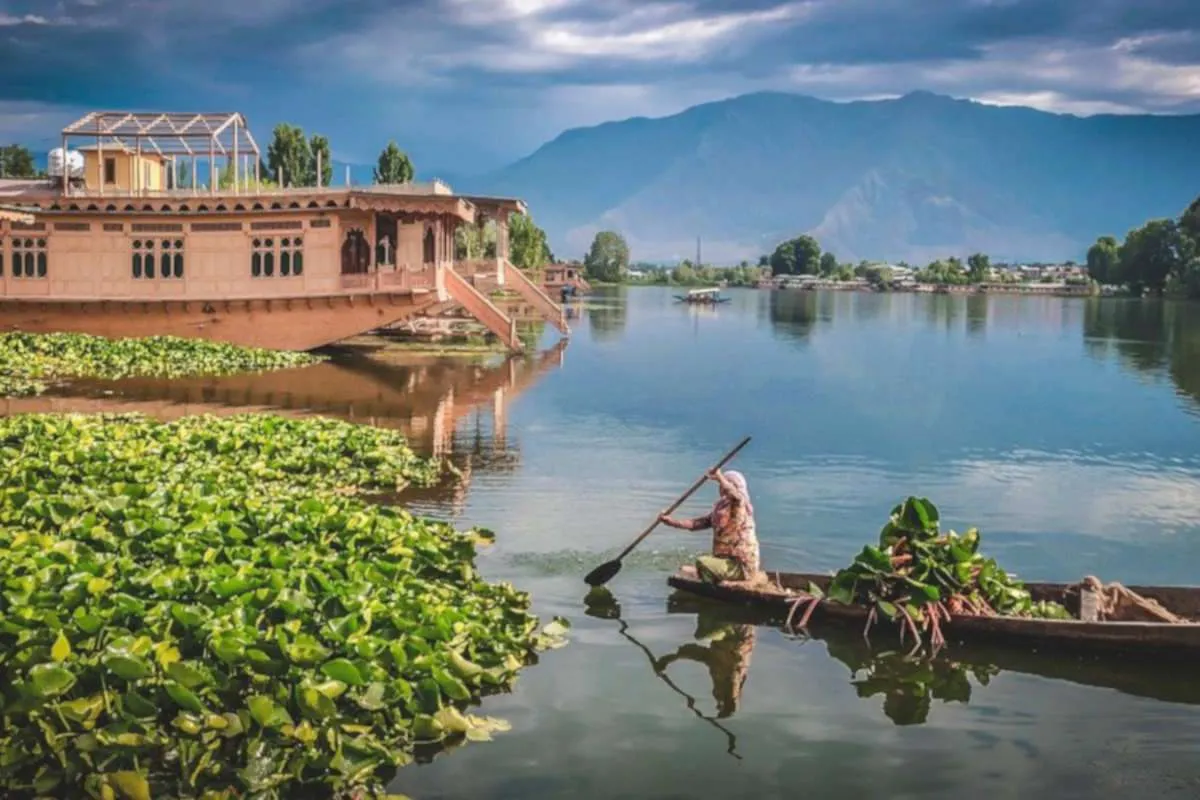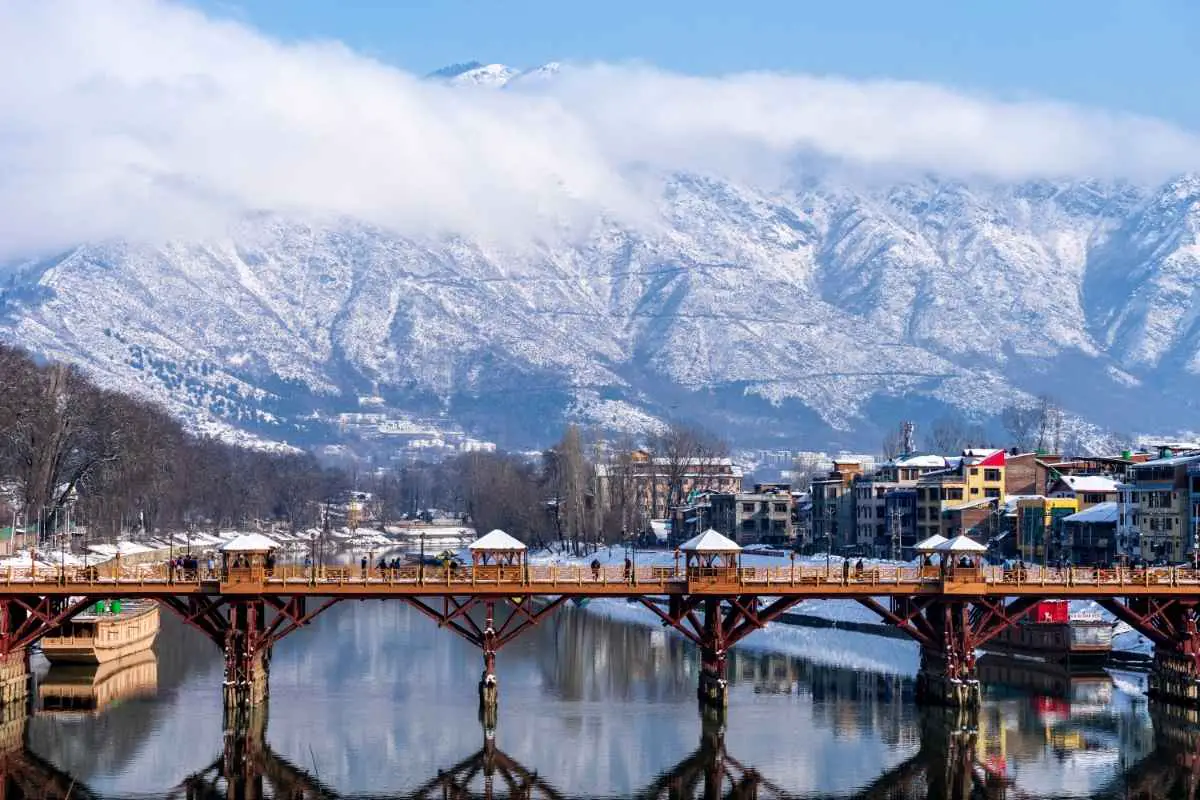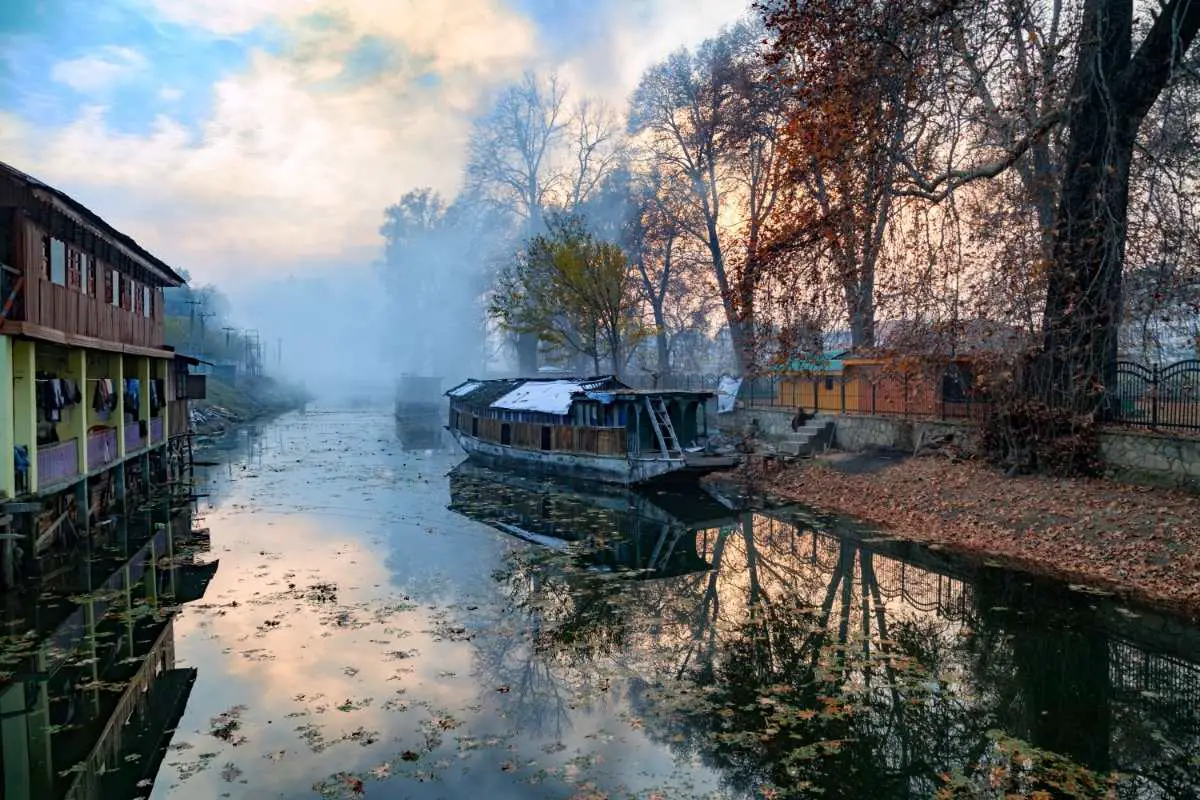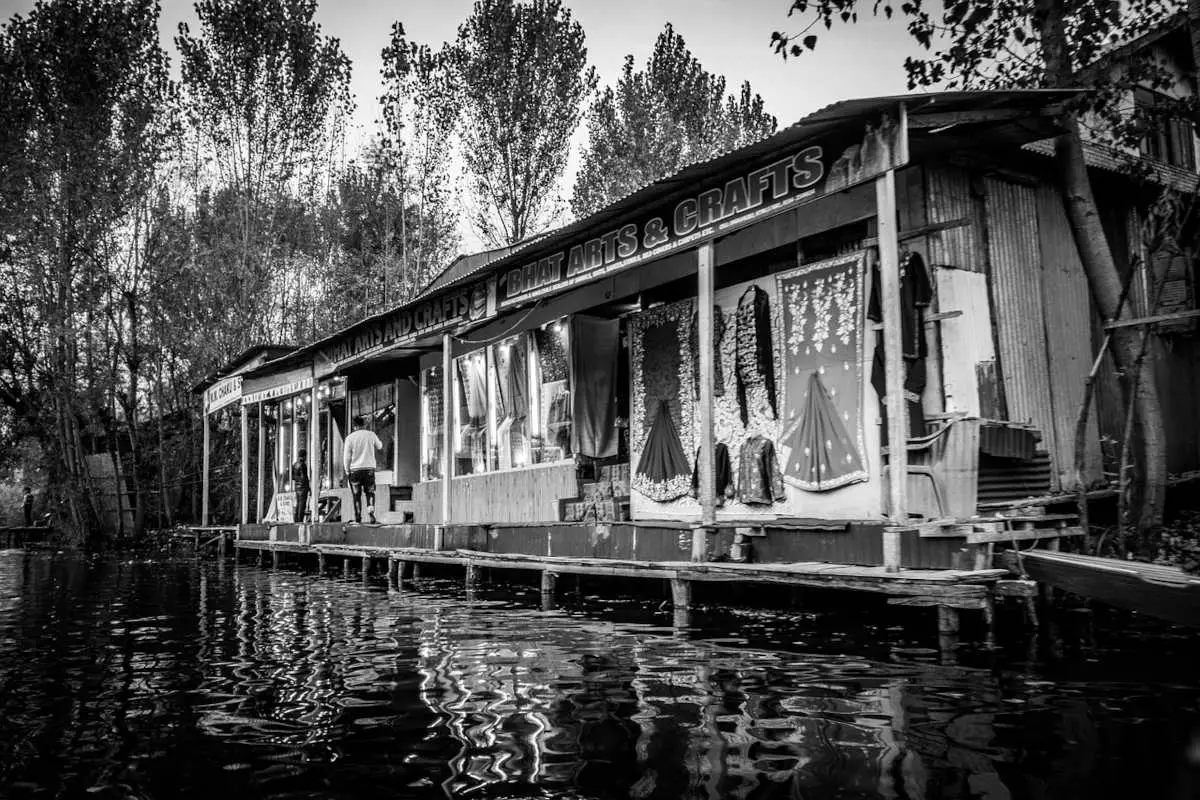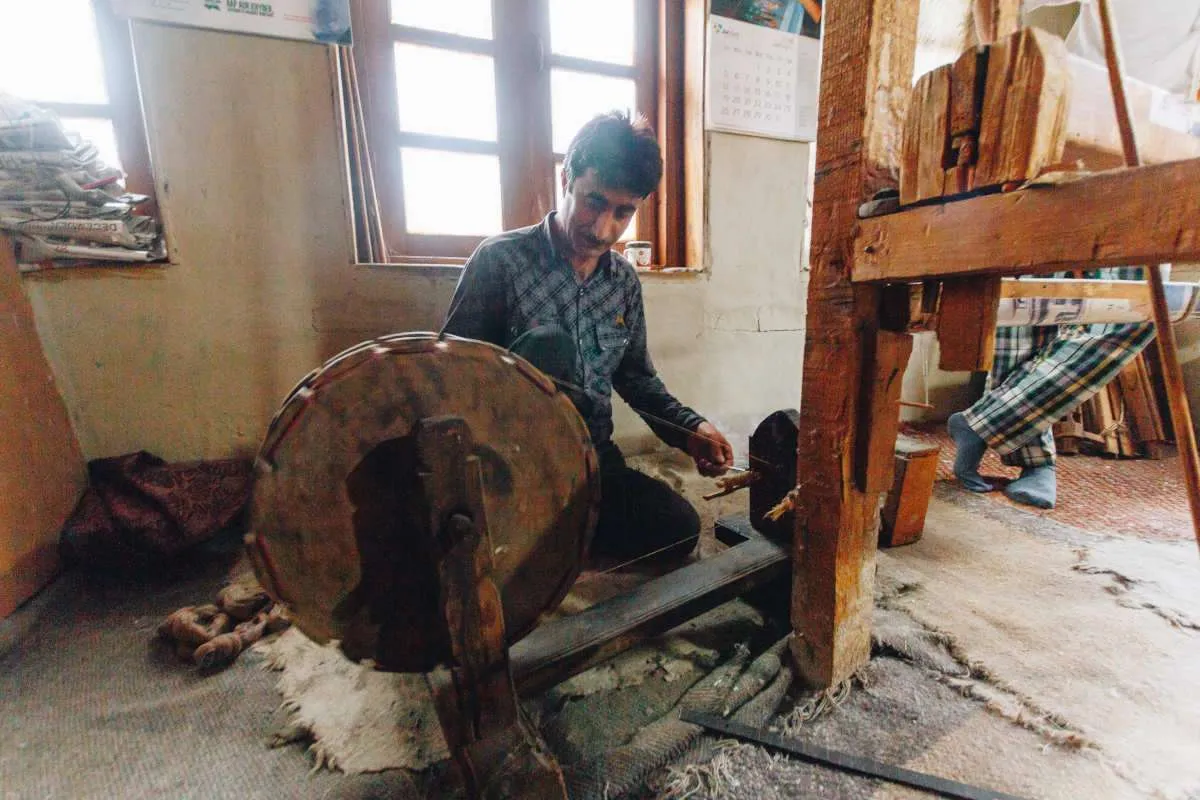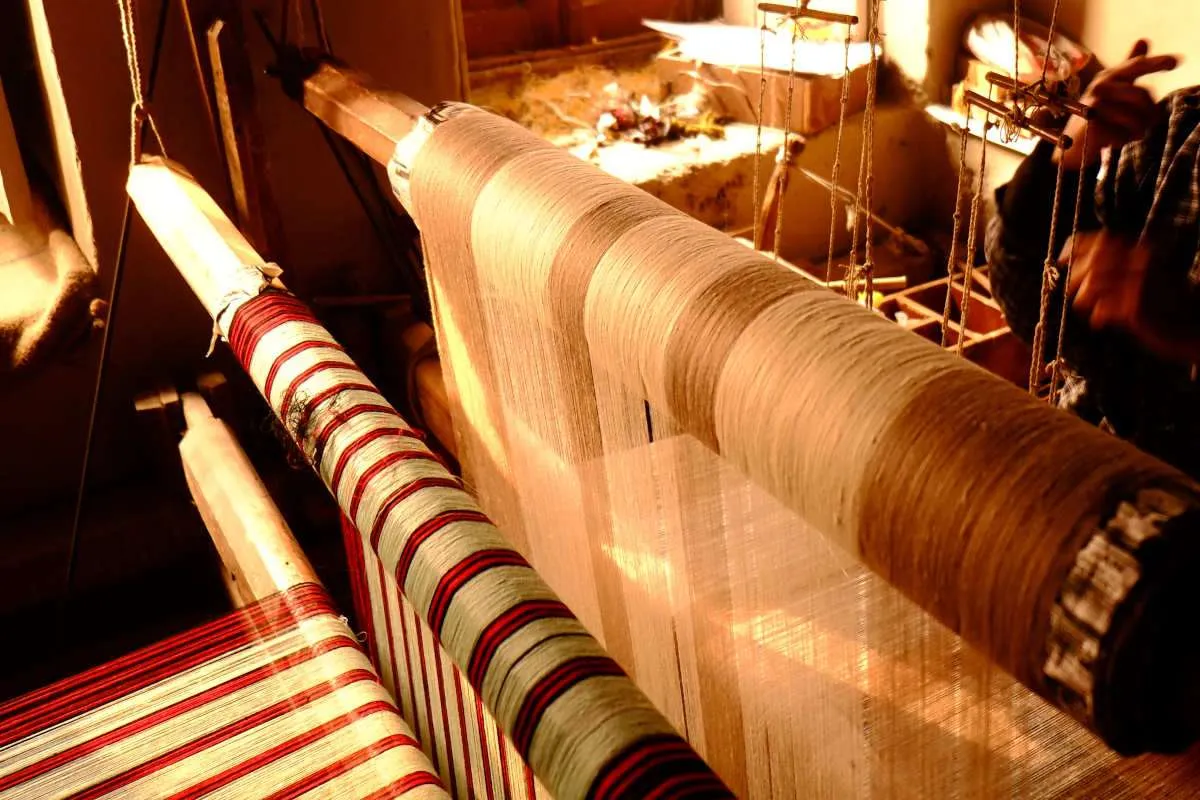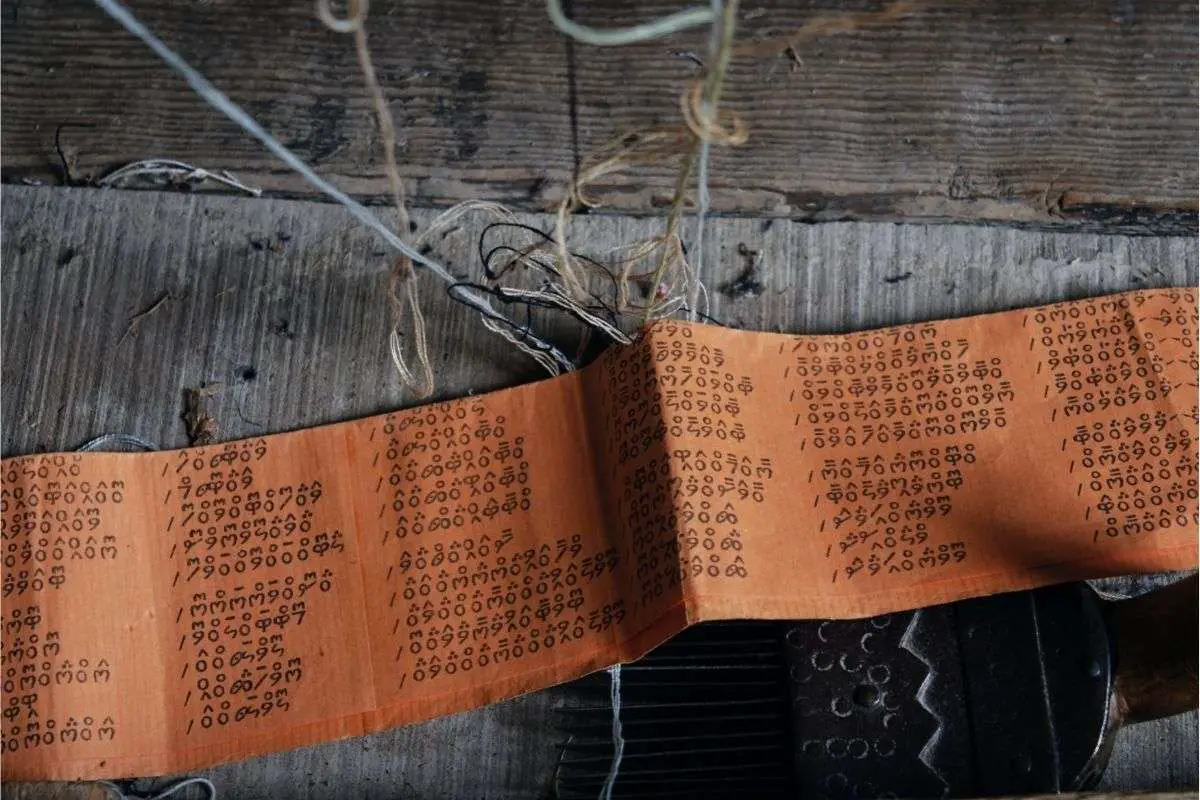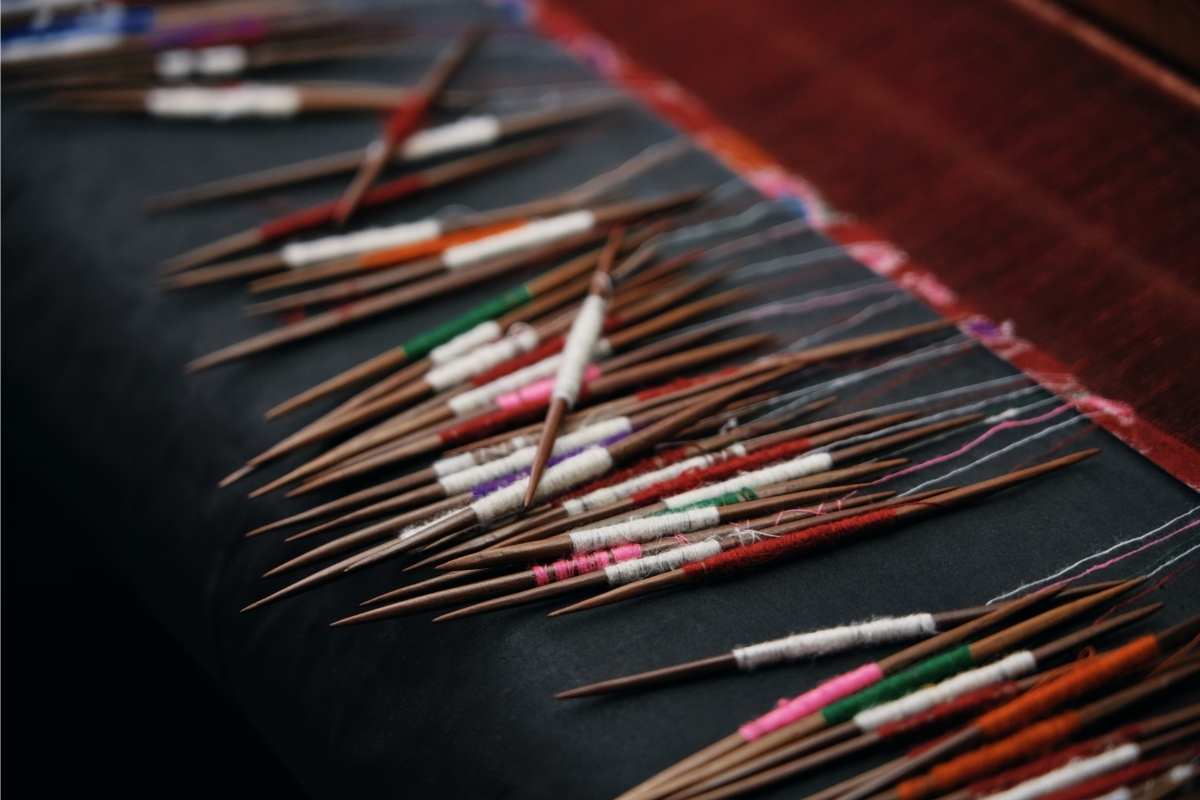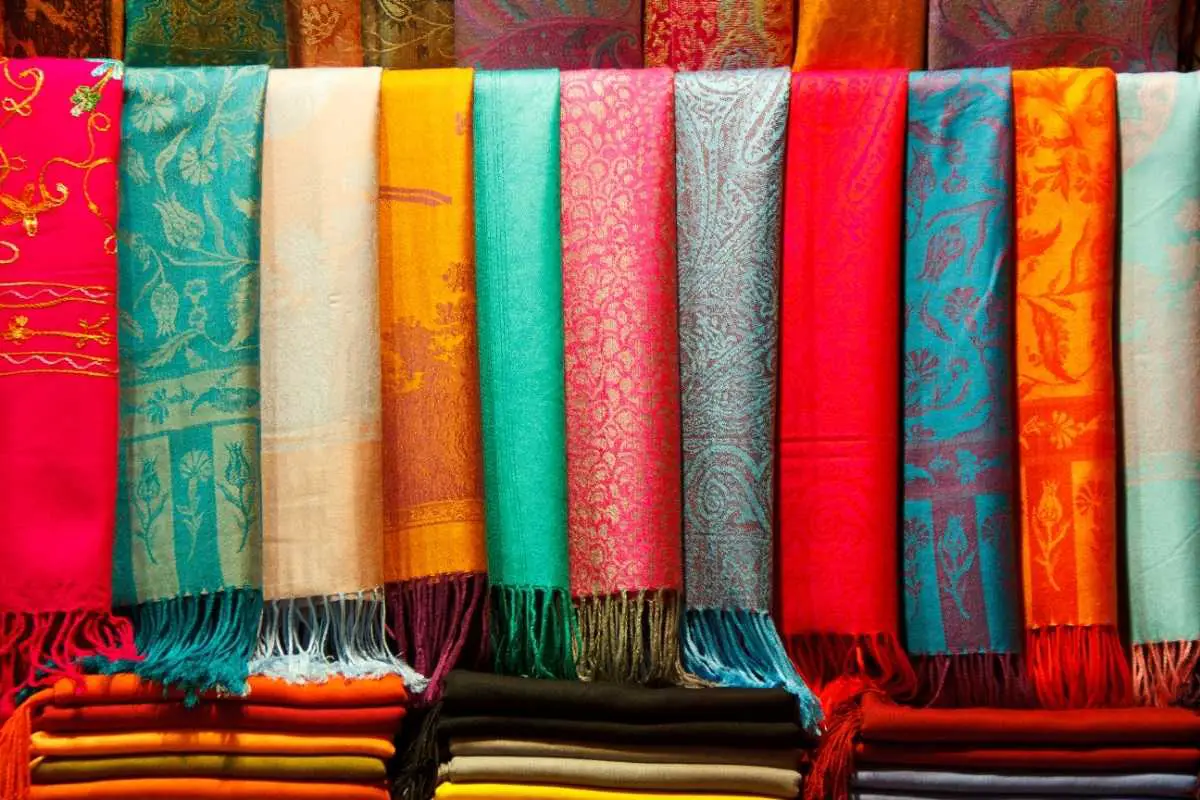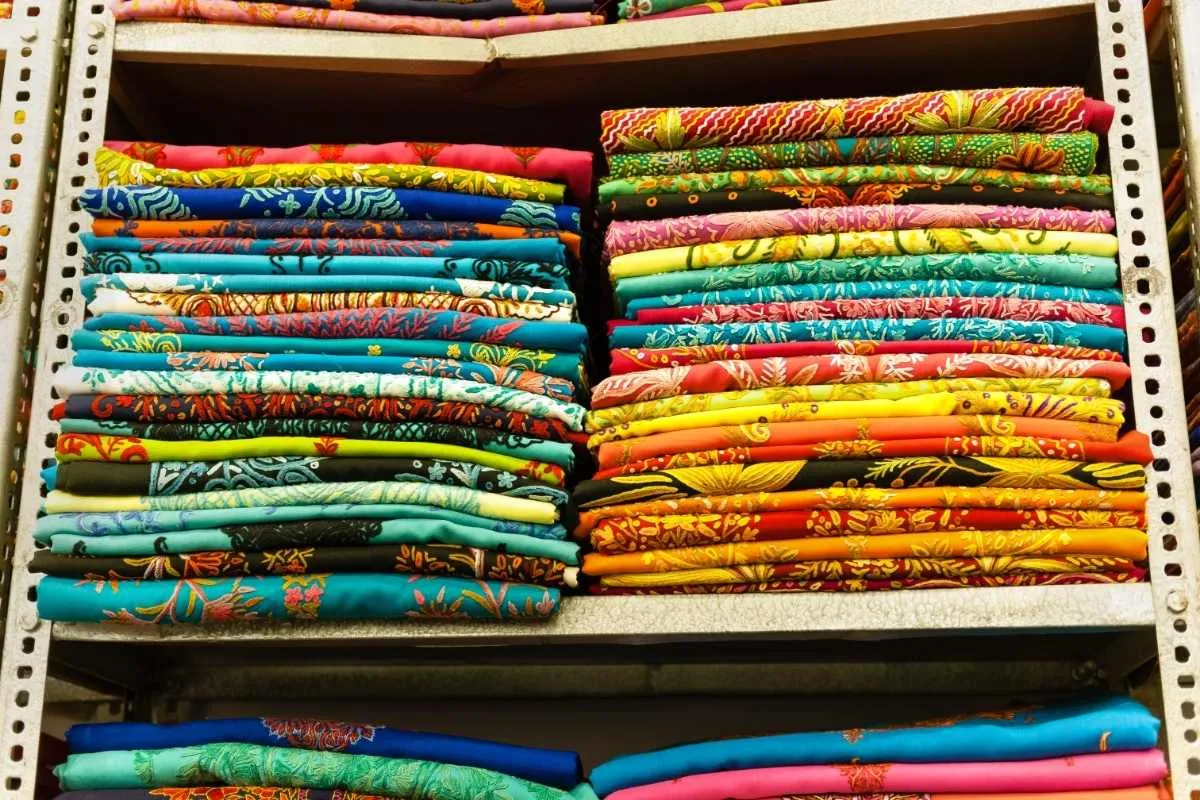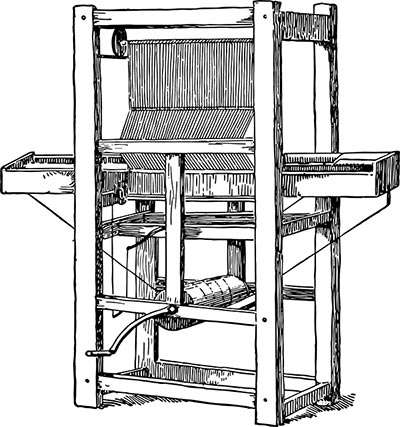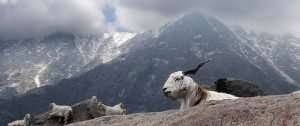What is the Origin and History of Cashmere?
Throughout the fashion world, there is arguably no more coveted and luxurious fabric than cashmere.
From its soft, gentle warmth to its hefty price tag, it has been a staple fashion must-have for those with deep pockets during many centuries and continues to top wish-lists today.
Cashmere is precious and arduous to produce; It is the lightest natural wool. Like no other natural fiber, cashmere wool creates a unique feeling of naturalness and well-being on the skin.
Join us on a journey into the mountains to learn more about one of the most luxurious fabrics in the world.
What is Cashmere?
In basic terms, it is merely the wool taken from a goat. To be more specific, it is precisely the wool from the undercoat, the area closest to the skin of the goat. And contrary to popular belief, the undercoat is not from underneath the goat on its belly. The specific area that produces this unique fiber is the mid-side or back. Some may harvest from the neck, but this area provides the lowest quality of wool fibers.
You cannot just use any goat to harvest cashmere wool. The individual goats required for this luxurious fiber are Capra Hircus. The Capra Hircus, or Pashmina goat as they are commonly known, reside in the Himalayas of Tibet and Ladakh.
All our work is reader-supported – when you buy through links on our site, we may earn an affiliate commission. The decision is yours – whether you decide to buy something is entirely up to you.
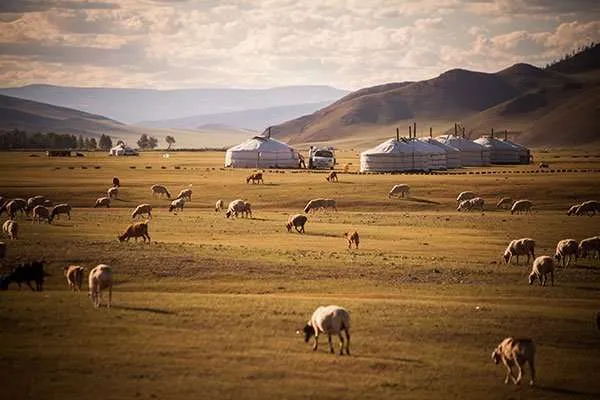
The Cashmere goat
The Capra Hircus, or Pashmina goat as they are commonly known, is typically found around the altitude of 4,000 meters in the Himalayas of Tibet and Ladakh. Also, Mongolia is home for a majority of these luxury providing animals.
In more recent times, the animals have begun to inhabit many other regions such as Australia and China, although there are smaller farms throughout many countries across the globe.
High quality of the undercoat hair is, however, what the breeders particularly appreciate about the cashmere goat. For this, the below-freezing weather is significant because it helps the goats to develop a thick, fluffy fleece.
Each animal produces only about 200 grams of the valuable yarn per year – and only if the weather conditions to which the goat is exposed are right. Cashmere goats domesticated for high-quality wool production you need to keep in regions with a severe winter and an altitude of around 4,000 meters above sea level.
History of Cashmere
It is recorded that Marco Polo discovered cave paintings in the 13th century while exploring the Mongolian Altai. These representations were apparently showing the combing and collecting of hair from domesticated goats. The highlands of Mongolia are known for their harsh winters and temperatures far below freezing, so even then, the exclusive wool of the cashmere goat was a necessity for people to survive at these altitudes.
Biblical references and Afghan historical texts mention the production of wool scarves in Kashmir and prove that the process goes back as far as the 3rd century BC.12
It is thus proven that people used these fine fibers for thousands of years in Mongolia, Nepal, and Kashmir.
“Production of wool under the Name Cashmere began when Ali Hamdani fetched some fine undercoat fibers from a cashmere goat and made socks, scarves, and caps. He gave socks to the King of Kashmir and recommended that the King start making scarves from this wool.”3
For use in scarves that were first produced in Kashmir, the wool fiber is also known as Pashmina (Persian for wool).
The historical origin of Pashmina lies in Srinagar, the capital of the North Indian province of Kashmir and Jammu. It is an area that is now equally claimed by India, Pakistan, and China.

Srinagar – the Capital of Jammu and Kashmir – is famous for its handmade ethical Pashmina Shawls, traditional handicraft weaving and textile embroidery from cashmere yarns. Today Himalayan Cashmere represents less than 1% of world production.
A Pashmina Industrie develops in Kaschmir
In the 16th century, a pashmina scarf industry slowly began to develop in Kashmir.
The colorful motifs decorating the scarfs had to be laboriously woven by hand (according to the principle of the twill carpet). This process required an enormous production time and the use of several artisans.
Cashmere shawls became incredibly popular; they started being shipped to Britain and France. To reduce the production time and the costs associated with it, the complex colored works of art were embroidered with needles, beginning of the 18th century.
This new technic was the only way to satisfy the high demand for Pashmina scarves from Europe at the beginning of the 19th century.4
Pashmina Production in Srinagar
The term Pashmina is usually misused in the textile business. Pashmina refers to a fine variety of spun cashmere, the animal hair fiber obtained from the downy undercoat of the Changthangi goat.
The word “Pashm” means “Wool” in Persian, but in Kashmir, “Pashm” refers to the raw, unspun wool of domesticated Changthangi Goats. This is a breed of cashmere goat native to the high plateaux of Ladakh in northern India.
The yarn is famous for its natural softness without chemical additives. In addition, Pashmina is warmer than other sheep or goat wool and an exceptionally lightweight. This results in the lightest, warmest and softest fabric for a genuine Pashmina.
The problem with the term Pashmina arises when shawls and scarves are mistakenly sold as Pashmina as if the term is a synonym for shawls and scarves, no matter what textile they are made of.
The Changthangi Goats live as farm animals in the very high altitude of the Himalayan region in north Kashmir, in Ladakh. If you think that Srinagar with about 1600 m is already high, you are surprised that these goats can not live in these low-altitude areas!
These goats live in much higher altitudes! In Ladakh, where these goats feel comfortable, is located at 3000 m and higher. Because of the cold there, the goats get a magnificent fine and soft fur at these altitudes.
After carefully combing out the fine wool from the goats’ fur, the Changpa Nomads of Ladakh bring the valuable goods from their high-altitude villages to the Valley of Kashmir to Srinagar to the spinners, weavers and art embroiderers there.
Because the wool is so extremely fine, it can only be spun by hand, and therefore authentic Pashmina can only be woven by hand. The thread is simply too delicate for machine processing.
Now that this fine work of art is produced, it is often embellished with additional embroidery in various traditional designs. Making Pashmina products is one of the oldest art forms in Kashmir, and the valuable products made from the finest Cashmere Wool are exported worldwide.
Pashmina made in Kashmir has even made it to a part of the national costume in the Sultanate of Oman, where men tie square Pashmina shawls – the so called Mussar in a unique turban style as headgear.
The finest of these noble shawls are worn by the most successful businessmen, government ministers, and Oman’s royal family.
The exclusive fabric was always able to adapt to the fashion and taste of the market and has never lost its aura of a luxury accessory object of all desires.
The University Town of Srinagar was the former capital of the Jammu and Kashmir region. The city has been a major tourist destination since the 19th century. It is sometimes compared to Venice because of its many waterways and numerous houseboats. Scattered around the city and Dal Lake, you can find several landscaped gardens that date back to the time of the Mughal emperors. There are efforts to include these gardens in the UNESCO World Heritage Sites list.U

Beginning of Trade with Europe
As mentioned earlier, in the 18th and early 19th centuries, Kashmir had a flourishing industry that produced scarves from cashmere imported from the Tibetan highlands. The scarves became famous in Western Europe when the general in chief of the French campaign in Egypt (1799-1802) sent one to Paris. The arrival of the scarf seemed to have sparked great enthusiasm, and business people made plans to begin manufacturing the luxurious fabric in France. 5
William-Louis Ternaux, the leading wool specialist in France, began in 1799 in his factory in Reims with the first European production of Indian scarves (Cachemires) – only he used Merino wool instead of Cashmere. In 1811 he also began to use the undercoat Flaum of Tibetan cashmere goats. 6
Crossbreeding – The Cashgora Goat
Some of William-Louis Ternaux’s goats were bought at a model farm in Grignon near Versailles, run by M. Polonceau.
M. Polonceau created a new race of Cashmere Angora Goats in 1822, by crossing the pure Cashmere goats imported into France with Angora Goats. He wanted to improve the down of the goat to make it easier to spin and weave.
The cross between Angora and Cashmere goats is now known as the Cashgora goat. The Hair of these goats is finer than pure mohair and somewhat coarser than pure cashmere. The yield per animal is significantly higher than that of cashmere goats.7
Cashmere – An important Industrie in Scotland
By 1830, the weaving of cashmere shawls with yarn produced in France had also become an important industry in Scotland.
The Scottish Board of Trustees for the Encouragement of Arts and Manufactures offered a reward of 300 pounds sterling for the first person to produce cashmere yarn in Scotland according to the French system.8
Captain Charles Stuart Cochrane tried to collect the necessary information in Paris and succeeded.
In 1832 Captain Charles Stuart Cochrane sold the patent to Henry Houldsworth & Sons of Glasgow, the first manufacturer to spin cashmere in Scotland. 9
The luxurious Cashmere Fabric arrives in the United States
John Capron installed the first power looms for woolens in North America at Uxbridge, Massachusetts, and made the first cashmere satinets in America beginning in 1820.
The city of Uxbridge, Massachusetts, became an early textile center in the Blackstone Valley, known for its production of cashmere wool and satin.
Many early textile centers were developed during the American Industrial Revolution. Among them, Blackstone Valley became an important contributor.
The Austrian textile manufacturer Bernhard Altmann brought cashmere on a grand scale to the United States of America from 1947.1011
Modern Day’s of Cashmere
China is the primary producer of cashmere today. China produces raw materials of more than 10,000 tons per year. The enormous popularity and demand for cashmere remain unbroken to this day.
Cashmere is incredibly soft and feels wonderful on the skin thanks to the very fine hair of the cashmere goat with a diameter of fewer than 19 micrometers.
There is no season when you cannot wear your cashmere sweater. In winter, there is no better protection against the cold as cashmere is up to eight times warmer than regular wool. Cashmere is also pleasant to wear in spring. Since it is so soft that you don’t have to put another shirt under it, you don’t run the risk of it getting too hot. In summer, it is a good idea to swap your blazer for a comfortable thin cashmere jacket on chilly evenings.
There’s still no more desirable and luxurious fabric than the fiber that adopted its name from the region of Kashmir India, where the undercoat of pashmina goats was first processed into the precious wool!

What to do against cold feet? Five tips on how to keep your feet warm in winter

How do I recognize sustainably produced wool clothing?
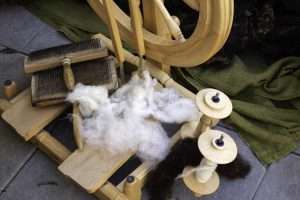
5 Factors to Consider When Choosing Yarn for Your Spinning Project

Alexander McQueen: The Visionary British Fashion Designer

The Magic of Personalized Photo Greeting Cards
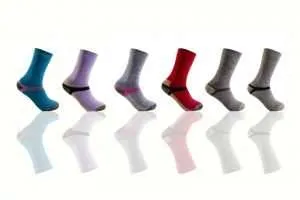
Which socks are best to wear for everyday or sports? – Three tips for your next sock purchase

Cruelty-Free Angora Wool Alternatives

Hiking with Merino Wool – Packing list for a four to five day trekking tour
Marco Heitner
- Pine Cashmere - The Origins of Cashmere, https://www.pinecashmere.com/blogs/blog/the-origins-of-cashmere
- Pashmina, https://en.wikipedia.org/w/index.php?title=Pashmina&oldid=924354676 (last visited Dec. 6, 2019).
- ]World Heritage Encyclopedia, Cashmere Goat, licensed under CC BY-SA 3.0 (last visited 07/26/20)
- Pashmina, https://en.wikipedia.org/w/index.php?title=Pashmina&oldid=924354676 (last visited Dec. 6, 2019).
- "Cashmere", The New American Cyclopedia, IV (1861), p.514.
- Ternaux, William (1819). "Notice sur l'importation en France des chèvres à laine de cachemire, originaires du Thibet"
- 1845 "The Art of Weaving by Hand and Power" By Clinton G. Gilroy S.270ff
- Cashmere wool, https://en.wikipedia.org/w/index.php?title=Cashmere_wool&oldid=927108854 (last visited Dec. 6, 2019).
- The Ministers of the respective parishes (1854). The New Statistical Account of Scotland, Volume VI. Edinburgh and London: William Blackwood & sons. p. 168.
- "Vintage Fashion Guild : Label Resource : Altmann, Bernhard". vintagefashionguild.org.
- Cashmere wool, https://en.wikipedia.org/w/index.php?title=Cashmere_wool&oldid=927108854 (last visited Dec. 6, 2019).
